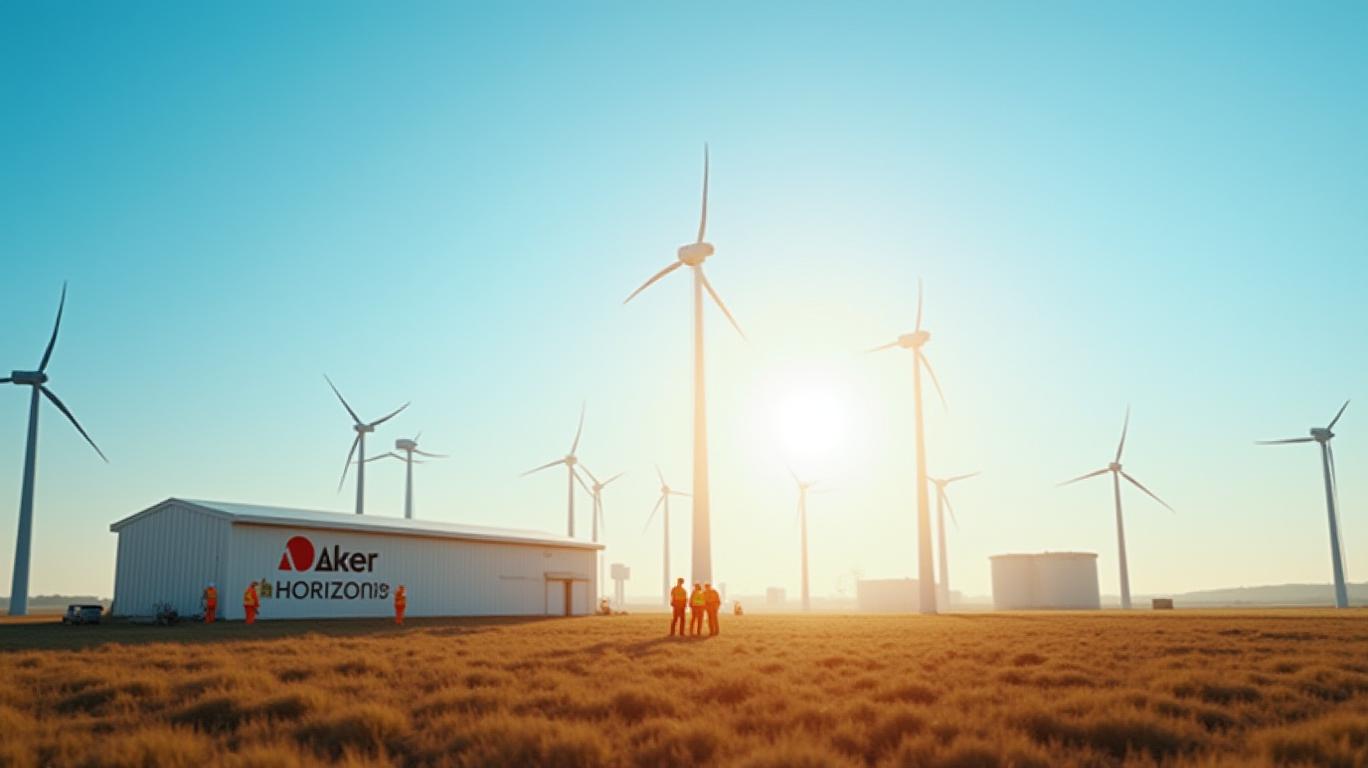Aker Horizons ASA’s Q1 2025 Results: Navigating Growth in the Green Energy Transition
Aker Horizons ASA, a leading developer of green energy and industrial assets, delivered a cautiously optimistic first-quarter 2025 update, emphasizing strategic progress across its portfolio while navigating financial headwinds. The report, released on May 8, 2025, highlighted a net capital employed decline to NOK 4.3 billion, driven by dividends from its carbon capture subsidiary and portfolio adjustments. Yet, with NOK 9.8 billion in total liquidity and key milestones in projects like Aker Carbon Capture (ACC) and Mainstream Renewable Power (MRP), the company remains positioned to capitalize on the global net-zero transition.

Financial Position: Liquidity and Dividend Yields
Aker Horizons’ cash position of NOK 4.1 billion and an undrawn EUR 500 million credit facility (now expired) underscore its financial flexibility. While the credit facility’s non-renewal signals a focus on self-funding, the total liquidity of NOK 9.8 billion—comprising cash, short-term deposits, and other assets—provides a robust buffer for future investments.
The dividend distributions from ACC were a standout feature. Aker Horizons received NOK 1.52 billion in total from ACC’s NOK 3.5 billion payout, with an initial NOK 1.26 billion in March and an additional NOK 0.26 billion in May. This reflects ACC’s strong performance, including its NOK 71 million earn-out from SLB Capturi tied to the Hafslund Celsio contract. The ACC dividend stream not only boosts Aker Horizons’ cash reserves but also signals the scalability of carbon capture technologies.
Portfolio Progress: Momentum in Key Sectors
The Q1 results revealed tangible advancements across Aker Horizons’ core sectors:
Carbon Capture Leadership: ACC’s dividends and commercial activity growth, including SLB Capturi’s role in tenders, position it as a cornerstone of the portfolio. The company’s technology is critical to industrial decarbonization, a sector expected to grow at 20% annually through 2030 (Global CCS Institute).
Renewables Expansion: MRP’s refinancing success in South Africa and Asia Pacific, alongside the sale of its Colombian portfolio to Celsia, signals efficient capital recycling. The 350 MW South African projects nearing financial closure—targeted for completion within 18 months—align with Africa’s renewable energy demand, projected to rise by 6% annually through 2030 (IRENA). MRP’s new CEO, Morten Henriksen, and Oslo-based headquarters further emphasize strategic repositioning.
Innovation in Energy Infrastructure: The SuperNode prototype’s March success in the UK and planned 30-meter demo in mid-2025 highlight advancements in superconducting technology, which could reduce grid losses by up to 90%. This aligns with global grid modernization spending, forecasted to hit $2.6 trillion by 2030 (BloombergNEF).
Green Industrial Projects: While the Narvik Green Ammonia project is paused pending grid approvals, Aker Horizons’ collaboration with Nordkraft on a data center in northern Norway leverages low-carbon energy and cooling advantages, capitalizing on the data center sector’s 8% annual growth (Synergy Research).
Capital Allocation: Prioritizing High-Impact Assets
Aker Horizons allocated NOK 898 million to ACC, NOK 2.06 billion to MRP, and NOK 195 million to SuperNode in Q1 2025. These investments reflect a focus on scaling proven technologies and projects with clear pathways to commercialization. Notably, the reduction in net capital employed (down NOK 1.7 billion from Q4 2024) suggests a strategic shift toward capital-light growth models, such as dividends and asset sales, to fund expansion.
Risks and Considerations
While the results are encouraging, challenges persist. The Narvik Green Ammonia project’s delay highlights reliance on regulatory approvals, and global grid infrastructure bottlenecks could slow deployment timelines. Additionally, Aker Horizons’ stock performance—down 12% year-to-date as of Q1 2025—reflects broader market skepticism toward green energy valuations.
Conclusion: A Strategic Position for Long-Term Gains
Aker Horizons’ Q1 2025 results paint a picture of a company balancing near-term financial discipline with long-term ambitions. Its NOK 9.8 billion liquidity, ACC dividend resilience, and MRP’s project pipeline provide a solid foundation. With 21,900 MW of projects under development and 1,000 MW operational, the company is on track to meet its 2025 target of 3,000 MW in operation—a 200% increase from 2023.
The SuperNode and carbon capture advancements also align with high-growth markets. For instance, the global carbon capture market is projected to reach $28 billion by 2030 (Lucintel), while superconducting grid tech could capture a significant share of the $2.6 trillion grid investment pipeline.
Investors should note that while Aker Horizons’ stock faces near-term valuation pressures, its portfolio’s scalability and alignment with net-zero mandates position it as a long-term beneficiary of the energy transition. The upcoming July 15 half-year results and SuperNode demo will be critical milestones to watch, as they could catalyze renewed investor confidence. For now, Aker Horizons’ results affirm its role as a key player in reshaping the world’s energy future.

Comments
No comments yet